Politics
After the Fall: 30 Years On, Germany’s Art World Reflects on the Night the Berlin Wall Fell (and What Came After)
Monica Bonvicini, Thomas Scheibitz, and other art-world figures remember the landmark moment in history on November 9, 1989.
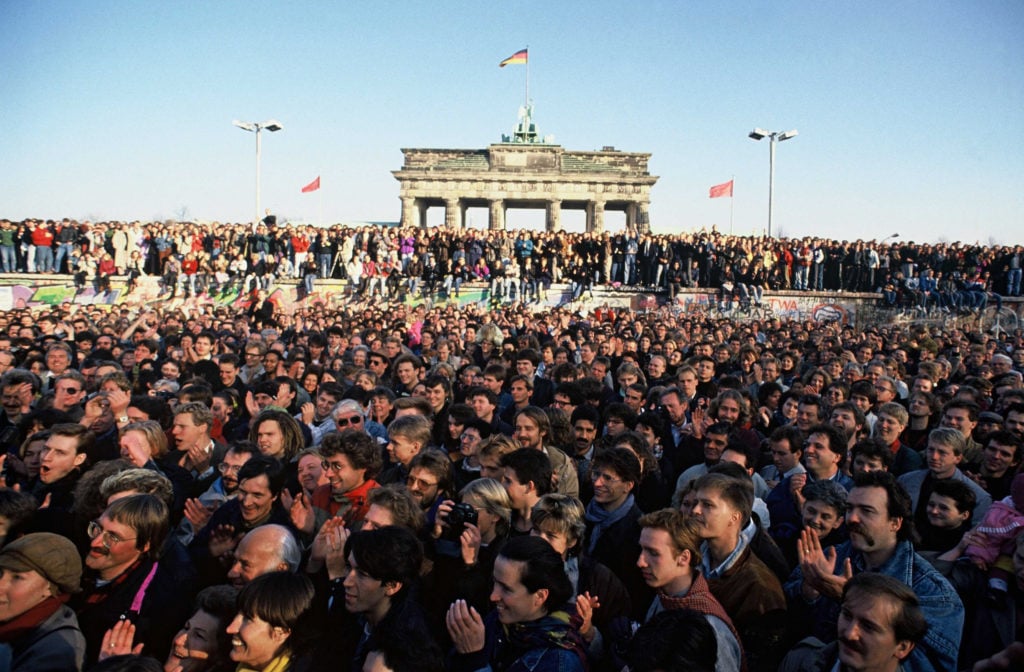
Monica Bonvicini, Thomas Scheibitz, and other art-world figures remember the landmark moment in history on November 9, 1989.

Kate Brown

The image is unforgettable: Thousands of people clamoring on top of the Berlin Wall, which, until that night on November 9, 1989, had divided the city. For 28 years, it had never looked so small. Now, 30 years after Berliners began tearing down the barrier, they are celebrating the landmark in history. But emotions are mixed as members of the German art world look back on both the hopes and disappointments of reunification. The division created at the end of World War II was never going to be easily or seamlessly healed.
It’s worth remembering that a few days before the wall came down, East Germans had gathered in the thousands—some say it was a million—to demonstrate for democratic socialism in their home country. Few could imagine that instead of reform, reunification—and capitalism—were to come. As one former citizen of the German Democratic Republic (GDR) told me ruefully: “I got more than I asked for.”
That’s just one perspective, but it begs wider questions: what was gained, and what was lost? And how do we reconcile that failed democratic-socialist dream, as artists face increasingly difficult conditions in Berlin today? How should museums and galleries display East-German art and its artists without tokenizing them? One way to grapple with the complexities of the fall of the Berlin Wall for German artists, curators, and gallerists is to hear from people who directly experienced the historic event and its aftermath.
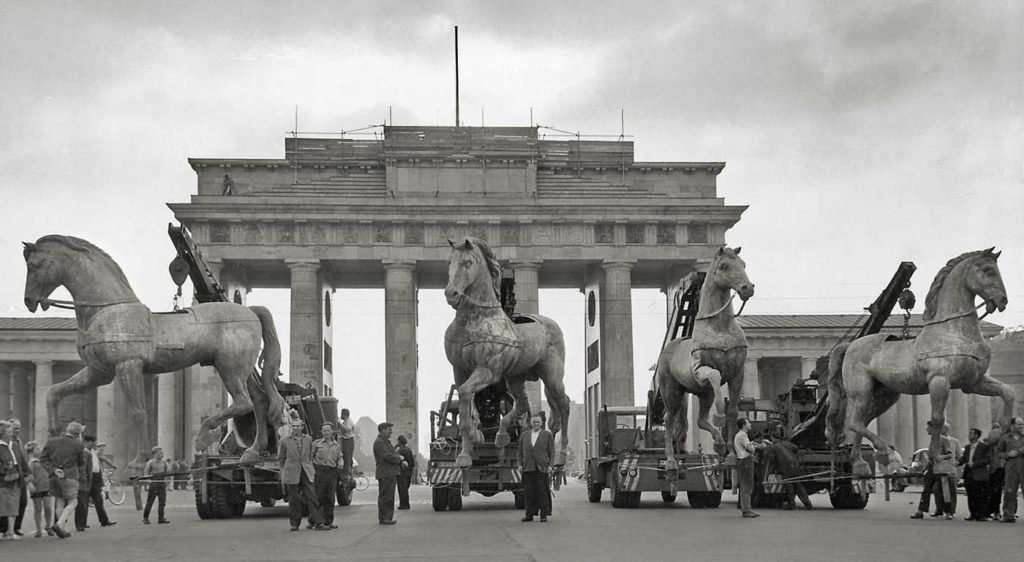
The horses of the Quadriga by Johann Gottfried Schadow at Brandenburger Tor after casting at Bronzegiesserei Noack, Berlin, 1958.
On the eve of the wall coming down, there were rumors of turbulence [in East Berlin]. So, off I went on my scooter to see what was happening. A crowd of people had already gathered. They began to climb over the wall and jump into the no-man’s land in front of the [Brandenburg] Gate. I followed and soon afterward I was confronted by the armed People’s Army, which fortunately remained calm. Half an hour later, with the help of others on the wall, I began my descent and disappeared. The next day the wall was opened. Coincidentally, I climbed over the wall almost exactly at the spot where my father handed over the Quadriga [sculpture], which had been newly manufactured in our foundry, to the East Administration in 1958.
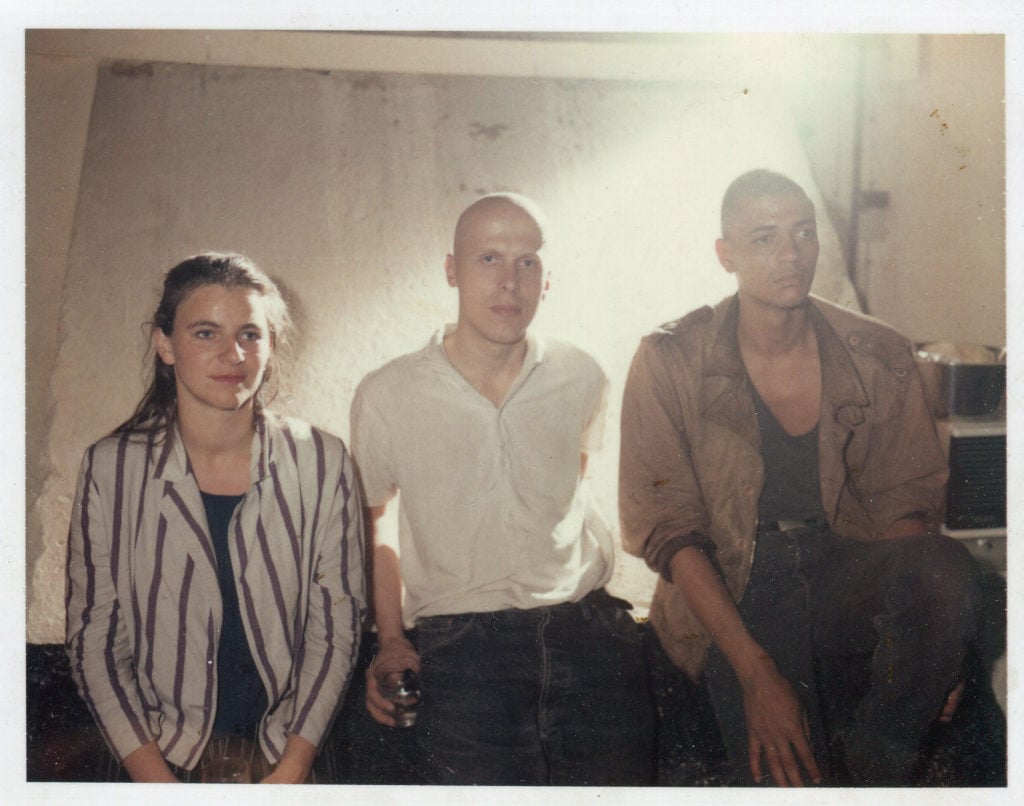
Artists Sabine Herrmann, Klaus Killisch, and Sangare Siemsen at Silberstein, one of the first artist run cafes and bars in East Berlin, 1990.
My studio was located in the district Prenzlauer Berg [then in East Germany], close to the wall. [It] was always present for us, not only as something that divided a city, but also as an attempt to confine our mind. I remember as a kid I would dream of how to get through a wall. This was a picture that followed me all the time, and I started to make a series of paintings to deal with the imagery.
In the summer of 1989 the Künstlerhaus Bethanien set up a show of young artists from East Germany. On the morning of November 9, my girlfriend Sabine Herrmann and I went over to West Berlin to see the show and visit some friends. In the evening, on the way back home, we crossed the East-West checkpoint at Friedrichstraße. What we came across was a totally confusing situation and we didn’t understand at first because we had not heard the news. Thousands of people were pressing and thrusting their way from East to West. The wall had been opened. It was a deep experience to be part of the Peaceful Revolution and to witness the fall of the Berlin Wall.
The time after was incredible. I was invited to exhibit at the Venice Biennale, I was able to travel and make a career. Today, Berlin is going through a typical transformation: Artists and creative people have made the city interesting, vibrant, and open. But it has become expensive and so, these very same people are the first to move on. Should I blame capitalism? I love Berlin.
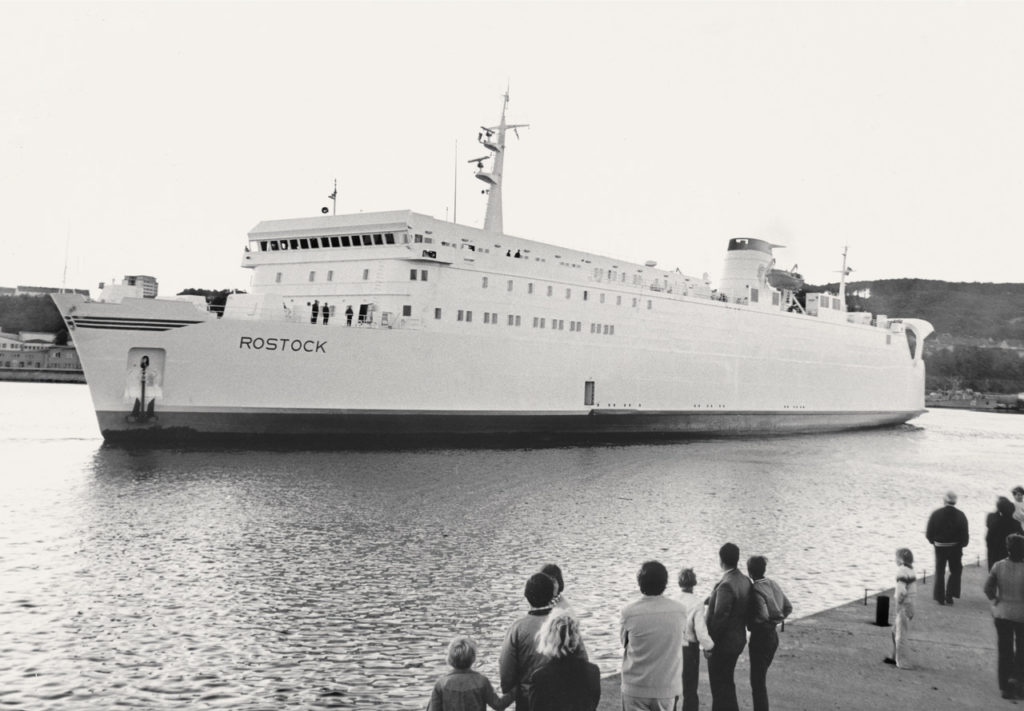
Sassnitz Ferry Harbor, GDR (1977). Sassnitz City Archive, selected by the artist.
We lived on the island of Rügen in the Ostsee, in former East Germany. The Iron Curtain was the guarded ferry port in my hometown of Sassnitz. I have no memory of the November 9, 1989. I was 13 years old at the time, and probably went normally to sleep that evening. The next morning I went to school, just as the day before. However, many of the seats in the classroom were empty. In that moment, I was graciously enlightened: “Johne, the border is open!” Strangely enough, I don’t associate any deeper emotion with this information, except that it pissed me off that the school become more and more empty every day. The teachers didn’t show up anymore. Yet I, along with a few other sad people, were still sitting around. My father was suspicious of the West. Only weeks later we drove to see, at which point he decided it was great. But I felt ashamed when strangers gave us money. Did we look so poor?
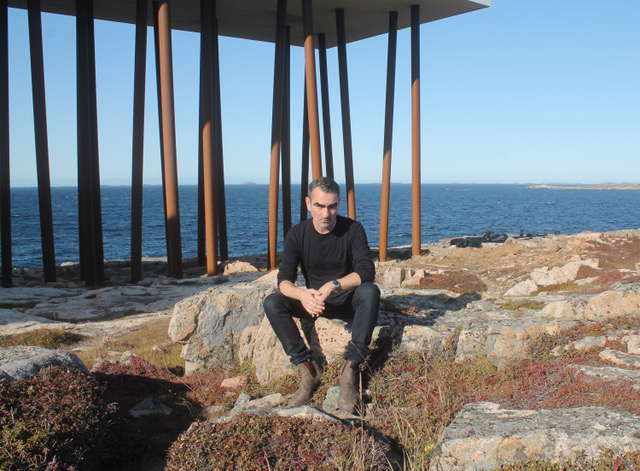
Nicolaus Schafhausen. Photo: Emily Gorner.
On November 9, 1989, I picked up a nervous phone call from my dad when I was living in Brussels. He came to collect me immediately and we drove toward Berlin, being held up in what felt like the longest traffic jam ever. We both couldn’t believe what had just happened. It was especially emotional for my father, whilst I was confused, if anything. Up until then, East Germany did not exist in my life and as such, the fall of the wall was somewhat irrelevant. Shortly after, I was an artist-in-residence at Künstlerhaus Bethanien in Berlin. I transitioned from artist to a curator and lived through some intense years of parties. All of us did. Berlin represented a place of the new, the conflict, the dream, the possible, and the impossible. Everything went under the premise: Let us be realistic, let us try the impossible.
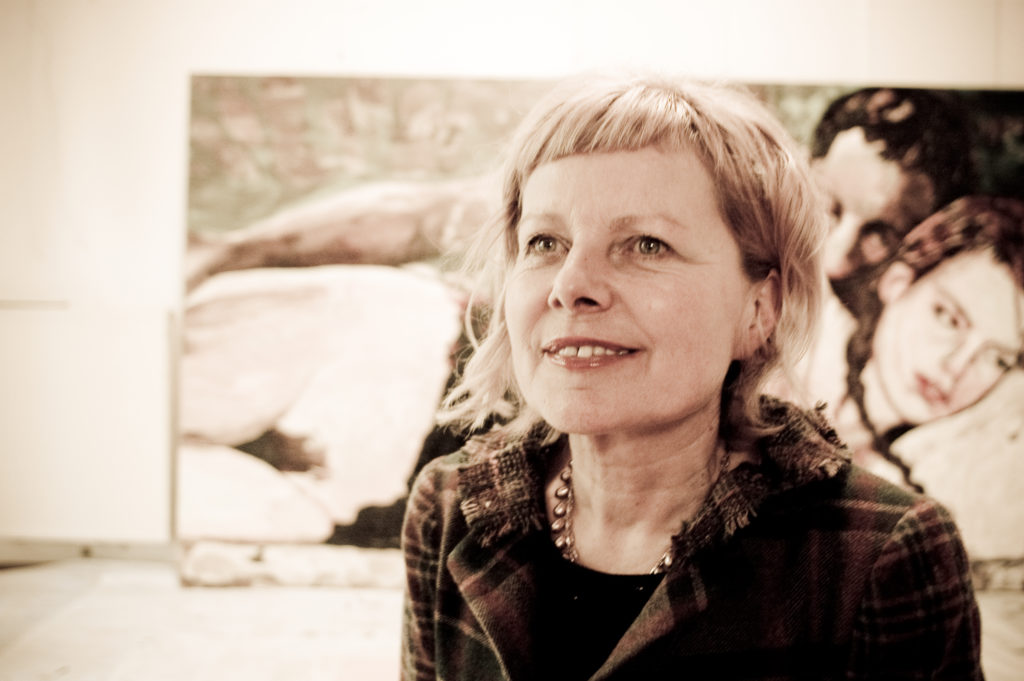
Cornelia Schleime. Photo by MC Hurek.
Artists who, like me, “expatriated” to the West from East Germany before the fall of the Berlin Wall had a head start. We had to bet everything on one hand, and accept the loss of family and friends, because we knew there was no going back. Often, we arrived in the West with nothing, even the works of art had to be left behind. This, however, spurred openness, sharpened our view of the new, and mobilized us to compensate for the loss of the art left behind by creating new ones. There was no time for a retrospective.
When the border was open, for the many artists who had not left East Germany, a fine dust began to fall on the illusion of rapid self-realization under the new conditions of a unified country. For the West, there was too much myth and too much martyrdom, too much tragedy, and too much dark color. Even we, the artists who had left the country, never completely got rid of our GDR victimized position. To this day, we find ourselves in large group exhibitions [in museums], for the most part forever caught within this context.
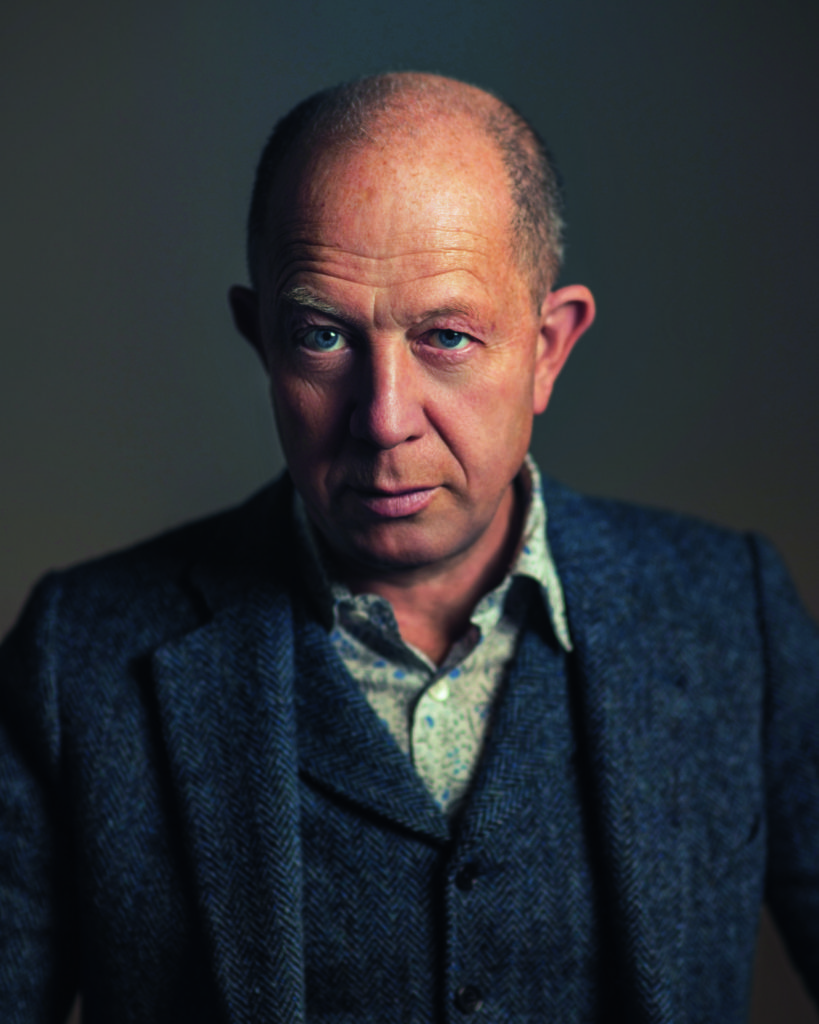
Gerd Harry Lybke. Photo by Enrico Meyer.
I’m from Leipzig, born in 1961, the year that the wall was built. In 1983, I founded the private gallery Eigen + Art there, when the GDR was still in full swing and no one suspected that this state would ever come to an end. In fact, it was forbidden to found a private gallery, so it was always only Eigen + Art and not Galerie Eigen + Art. That this was possible at all shows the end was occurring from the very beginning.
In 1992, after the fall of communism, I went from Leipzig to Berlin to set up the gallery’s second location. I went to Mitte, because nobody was there yet and because I had a free choice, so to speak. It was as if you were the first to venture onto a frozen lake. Untouched terrain first has to be explored. Because we knew no one, those who had left had done so without a trace. We could—and we had to—discover and learn everything ourselves. We have experienced how the system of the GDR, that of the Federal Republic of Germany, both came to an end to become a new system. Now, the whole world is moving towards yet another system. The next task is to get involved and to influence this development as consciously as possible.
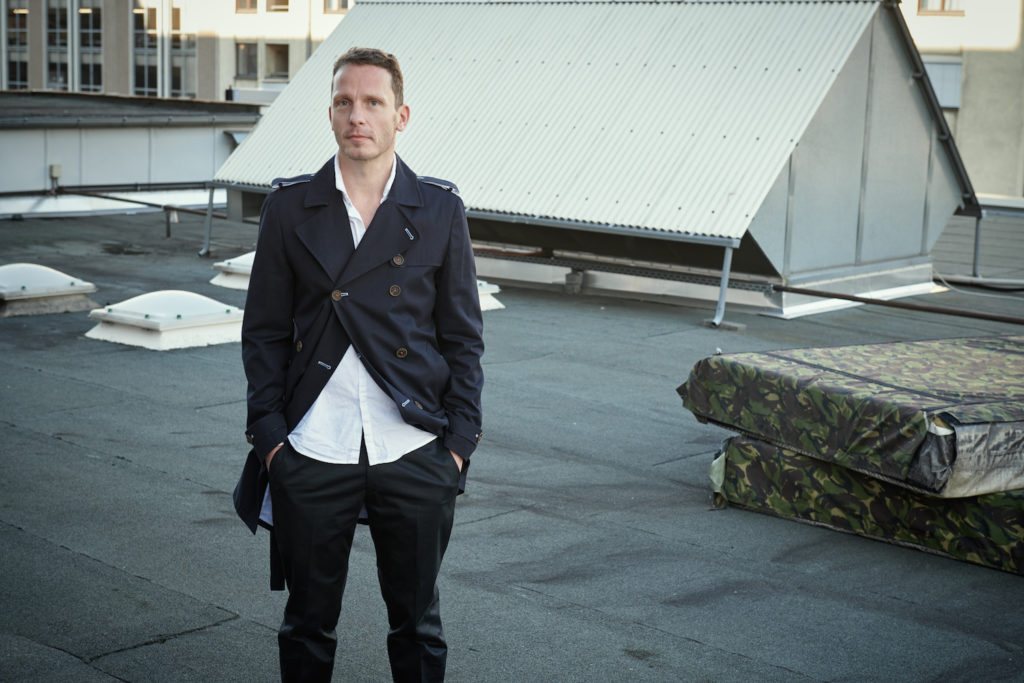
Norbert Bisky (2019). © Studio Olaf Heine.
Before the fall of the Berlin Wall, East Berlin was as detached from [the art world] as a Siberian industrial city. Afterward, from the western part of the city and from everywhere else, artists, eccentrics, and exotics came and occupied the huge empty spaces of the city. Within a few years, Berlin became the center of contemporary art production. I was thrilled, got carried away, and began studying painting at the Berlin University of the Arts under Georg Baselitz. He told me to transform the tacky images that I grew up with “behind the moon.” That’s what I did.
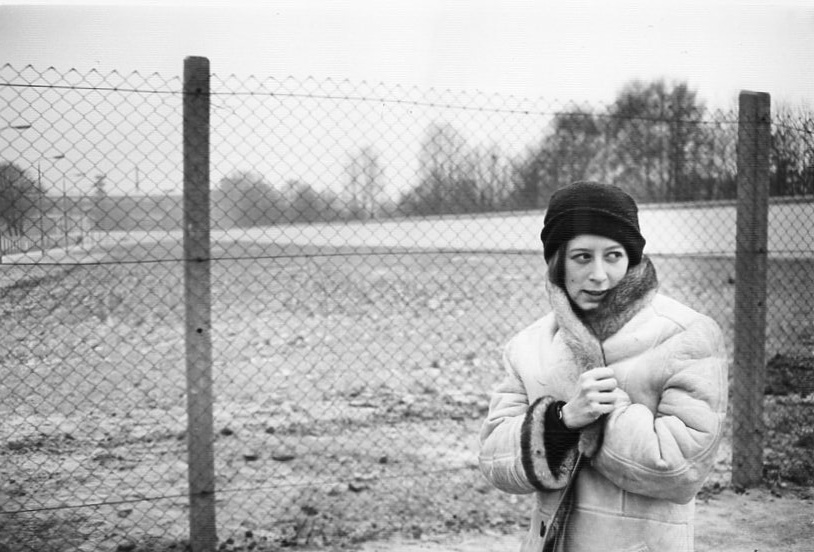
Monica Bonvicini in 1989 at Schlesische Strasse.
I was a student at the Berlin University of the Arts in the West when the Berlin Wall fell. That night, I went with some fellow students to Brandenburger Tor, where I stayed all night long. At some point I went home but I could not sleep so I went back out on my bike. From the western districts of Wilmersdorf through Tiergarten, everything was crowded with people—it was maybe Berlin’s first Love Parade. Everybody seemed to be so happy, almost in an ecstasy, repeatedly chanting: “We experience history!”
I grew up with two Germanys, but the reason why two Germanys existed seemed historically reasonable to me. While I was glad for the people who crossed freely through the wall that night, it also made me nervous. The wall fell and it was a fact. The GDR was over, also a fact. But did this mean that the idea of a socialist state in Europe was over as well? For the first time, I did not feel the weight of history, but rather what it means to be European.
That night I lost a bet I had with my father: He believed all his life that the wall would fall sooner or later, and he was right. But I can’t say he was reassured when it happened. Now, 30 years later, I can proudly say that I am a Berliner. The city has changed enormously, while retaining its “young” soul and the restlessness and curiosity that characterize it.
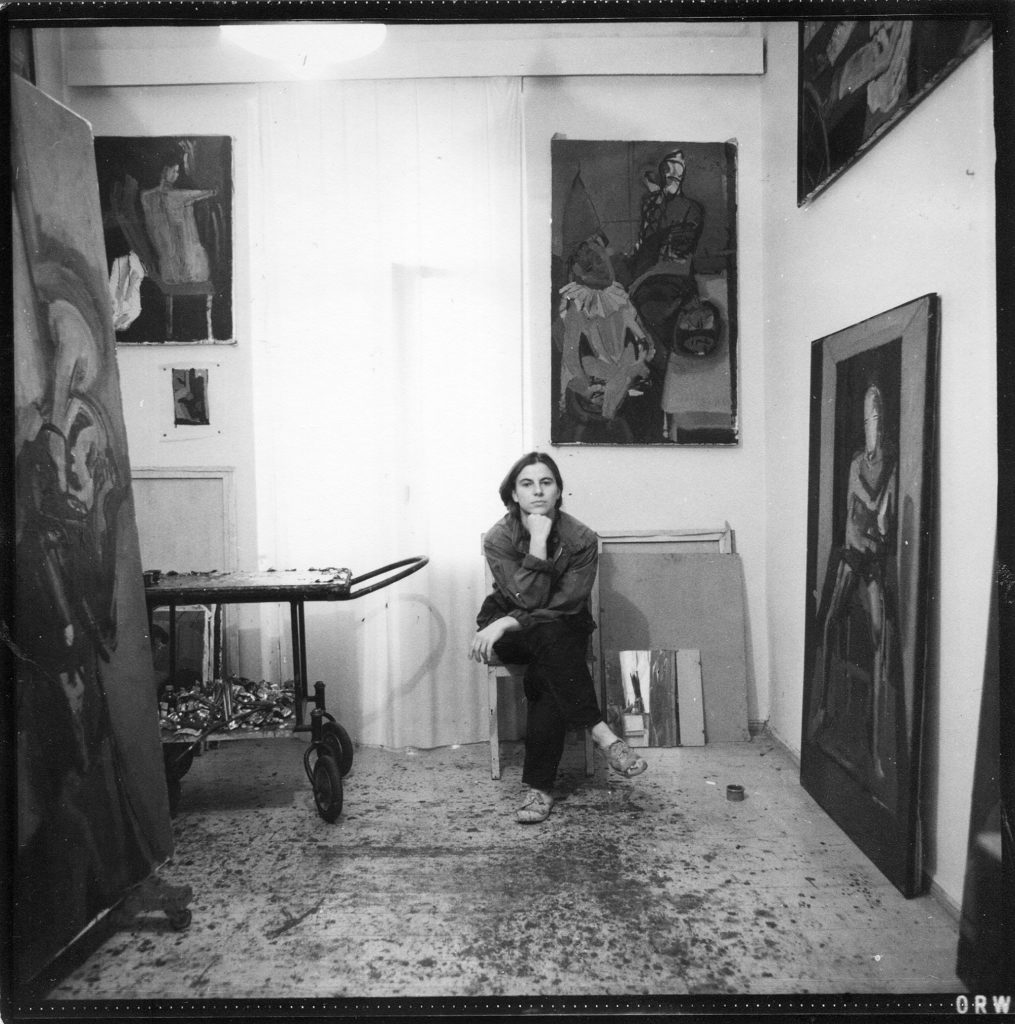
Sabine Herrmann in her studio in on Lychener Straße in Prenzlauer Berg, 1989. Photo: Karin Wieckhorst.
In October 1989, curators Bea Stammer and Christoph Tannert from the Künstlerhaus Bethanien organized an exhibition called “Zwischenspiele” (Interludes) that included East-German artists. Some of the participating artists were officially allowed to travel to the West for the first time, even though it was only a few kilometers away in Kreuzberg. It opened on October 22, 1989. I waived my visa in solidarity with the artists who were not allowed to travel, though it was only valid for those few eventful weeks. Shortly after, the wall became permeable and everyone flocked to West Berlin. In a very short time, I experienced many things for the first time: Francis Bacon at the Nationalgalerie, my paintings in a Western context, and the collapse of all hierarchies that had previously been perceived as petrified. It was overwhelming.
By 1990, it had only been a few weeks since the wall was opened, but everything was already so far away. The self-confidence with which we spoke back then about the future is touching from today’s standpoint. We were so unbelievably happy, and thought everything grey was over. The state of emergency had vanished into thin air. But many things were not over; many things returned. Nevertheless, I love the alternatives I have today, even if it is just going to the studio and working.
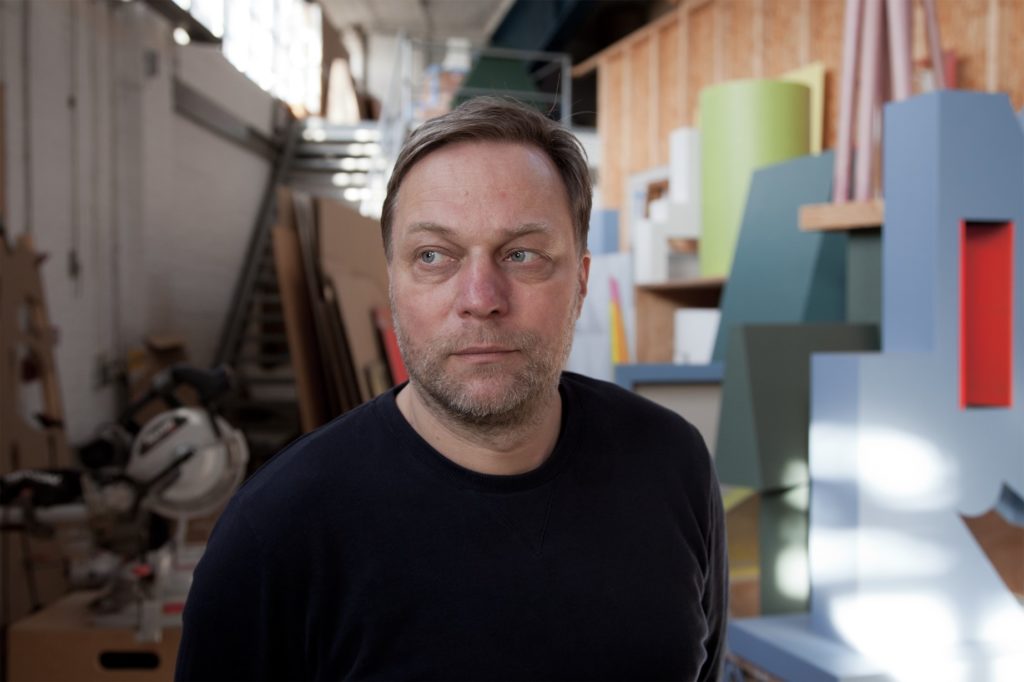
Thomas Scheibitz. © Luci Lux.
The situation shortly before the fall of the Berlin Wall had felt very cramped and compressed. Having to stand behind an unwanted influence was not acceptable. Our sense of knowledge and recognition was conditional, unsatisfactory, and determined by others. In the German Democratic Republic, I always had the impression not to see the whole side of life. Information about the world — the intellectual side of the world — was the most important “commodity,” as it still is today. Who had access to it and who did not was a decisive question within a dictatorial system. From today’s perspective, therefore, most of the works of art from this period somehow look withdrawn or even limited. They are simply the sum of the possibilities of time. It is sad to see, and there are a few exceptions, of course.
Today, one can make conscious the things that interest me, and I have at least the impression that I am little determined by others. Perhaps this helps art the most. Looking back at the longer history of art again, most of the things that we hold in high esteem today were created under the most extreme personal or political conditions. Only posterity will be able to conclusively judge the criteria for today’s time. From this historical experience, it is a great luxury for me to do things the way I can, with the greatest possible independence of mind and form. That must be protected.
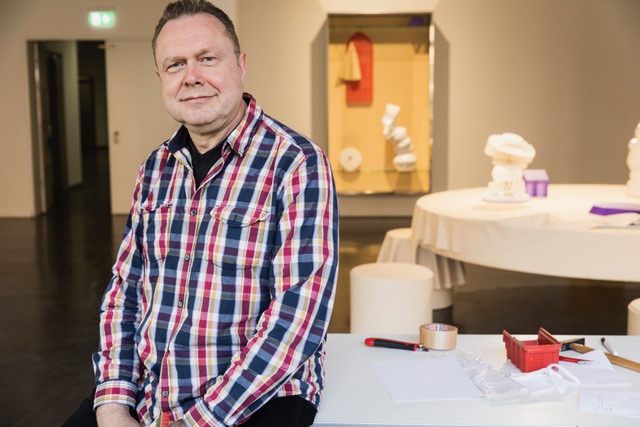
Christoph Tannert. Photo: Pam Spitz.
What did the German politicians not promise us after the fall of the Berlin Wall? When I think of the full-bodied promise of the then Federal Chancellor Helmut Kohl that there should be “flourishing landscapes” (in other words, an equalization of living conditions) in the East as quickly as possible, I am somewhat sobered with regard to what has been achieved.
We can see that this has not happened and perhaps will never happen at all, and that there may never be the hoped for respect and equality for “Ossies”. That’s an enormously frustrating prospect. If we are honest, we have to say that reunification has not been successful, that reconciliation has not really taken place yet, yes, that there is basically no mutual interest in listening and understanding each other. East Germans are not equal in Germany.
This is particularly evident in art. With the exception of a few stars, Eastern artists play no role in the art market.The management in museums and the vast majority of cultural institutions in the East [is] by West Germans. This arrogant administrative elite has for decades banished the art of East Germany to the cellars. Only now, under massive political pressure from outside, is East Germany finally beginning to come to terms with its own history.
This one-sidedness has triggered a political counter-reaction: East German identity is being rediscovered and upheld, especially by the youngest generation in the East. Children from GDR families have rejected the attitude of their parents towards the “victorious democracy” of the West. Meanwhile, in the West the nostalgic longing for the old Federal Republic, where supposedly everything was so peaceful, tolerant, and multicultural, is taking hold.
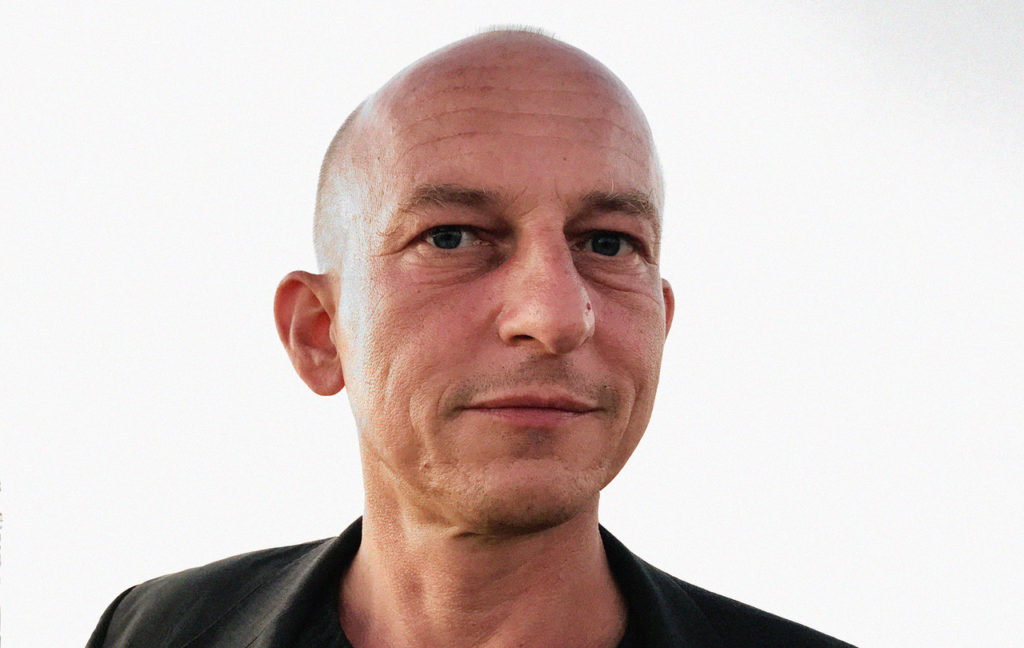
Alexander Koch.
I grew up in West Germany. In 1993, at the age of 19, I moved to Dresden to study painting before moving on to Leipzig in 1995. Only later could I see that I had gone through the 1990s without any connection with the East German art world pre-1989 or its transformations post-1989. And that was not just me: Large parts of an entire new generation—regardless of which side of the Wall in which they were born—looked west. The careers of numerous significant local artists eroded while quite a few of us newcomers made international careers. In fact, we were in the middle of a cultural disruption that felt, wrongly, like a vacuum to me, which seemed to demand to be filled. And so we did just that, inspired by what we saw in Cologne, Vienna, London, New York, and later Berlin. The art world mirrored what, at the time, I could not see: The devaluation of GDR and post-GDR histories after the reunification.